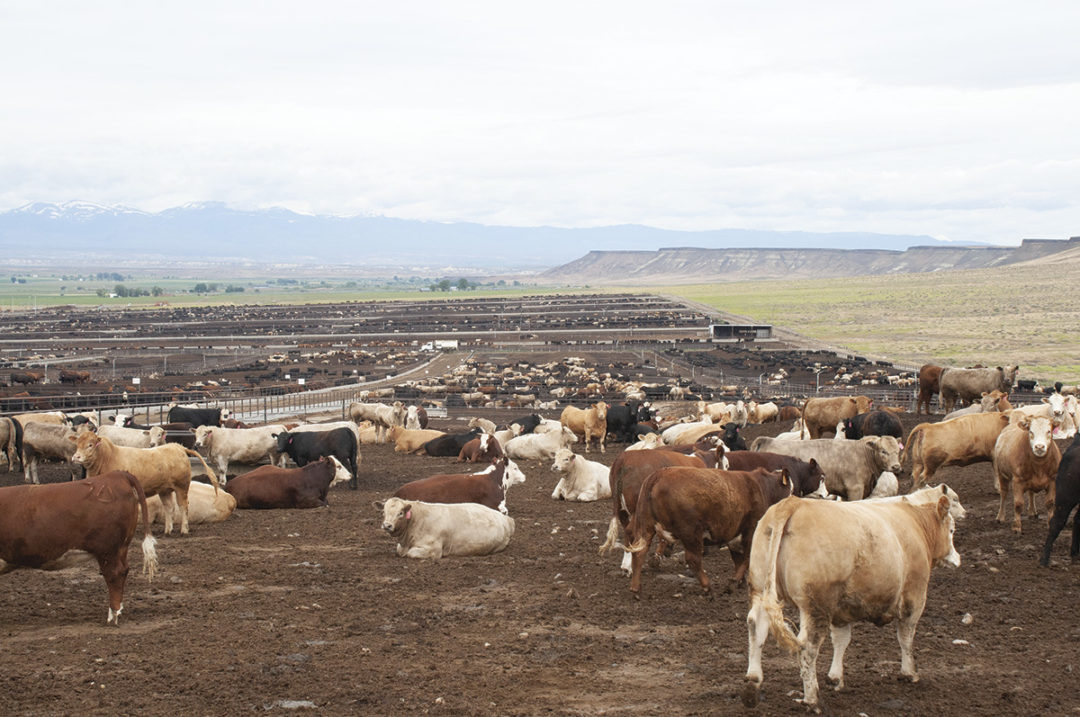The beef industry faces a significant challenge with the increasing losses of feedlot cattle to bovine congestive heart failure (BCHF), particularly during the latter part of the finishing period.
A recent study published in Frontiers in Genetics, conducted by Randall Raymond – director of research and veterinary services for Simplot Livestock in Grand View – and colleagues, highlights BCHF's prevalence in feedyards and its impacts on cattle health, offering mitigation insights.
The study was funded by Simplot Livestock Co. and Gencove Inc.
“In Simplot’s operations, a significant portion of feedyard mortality is associated with bovine congestive heart failure,” Raymond explains. “In addition to feedyard death loss, 4 percent to 5 percent of cattle that ship in normal harvest groups have heart changes consistent with bovine congestive heart failure. We also see cases in commercial cow-calf females, breeding bulls and occasionally neonatal calves.” However, this statistic doesn’t include rangeland cattle.
Raymond emphasizes that this syndrome impacts the entire beef industry, not just in Idaho. However, as the industry prioritizes enhanced growth traits without screening for BCHF risk, the number of affected cattle is likely to rise due to high genetic correlations with growth, carcass weight and feed intake. "This means that late-term morbidity and death loss with no effective treatment interventions will continue to rise, which will have very negative economic effects on cattle feeders that raise or procure cattle that are high risk for this condition,” Raymond says.
Research insights and findings
Over a two-year period at an elevation of 2,480 feet in Grand View, cattle from various operations in the West, including commercial cow-calf origins as well as beef-on-dairy and dairy breeds, were enrolled for data collection and processed at a commercial feedlot.
An emergency harvest identification and shipping procedure was developed by Simplot Livestock Co. and implemented by trained feedlot personnel. Shipments were managed weekly from May through September.
Horseback pen riders were trained under the supervision of Dr. Raymond to identify individual cattle at risk of feedlot mortality. Raymond says, “Clinical signs of heart failure include exercise intolerance, increased respiratory rate, open-mouth breathing, and swelling of the brisket and tissue under the jaw.” Other signs include increased salivation, abnormal posture, general malaise and/or failure to thrive.
“Many breeds have been demonstrated to have high-risk individuals,” Raymond continues. “The English-type breeds that were historically developed at lower elevations seem to have the highest number of high-risk individuals in their populations.” Research found that 5.28% of the English crossbreeds shipped to CS Beef Packers in Kuna from Simplot Livestock had an elevated heart score of 4 or 5.
Practical solutions and genetic screening
Selecting bulls or heifers with a favorable genetic prediction for BCHF risk will result in a lower incidence of feedlot mortality in future calf crops. Heart failure can be reduced through genetic selection and stress management. “We are screening all new bulls prior to purchase using genomic testing. Individual producers can reduce the risk [to] feedlot cattle by aggressively utilizing crossbreeding and bull screening for this condition. Other strategies for decreasing feedlot mortality include low-stress cattle handling techniques, early detection of clinical signs and shipping clinical cattle prior to their penmates. No treatments are effective.”
Neogen’s Igenity BCHF is a “commercial product that is recently on the market that is a tool for genetic selection for bovine congestive heart failure,” Raymond says.
For breeding cattle, genomically screening A.I. sires and embryo donor cows can have a dramatic impact on a population. Screening seedstock herd sires, commercial bulls and replacement heifers can also be effective to prevent creation of higher-risk feeder cattle.
With the average elevation of Idaho at 5,000 feet above sea level, heart failure is a problem for ranchers. “Brisket disease typically occurs in cattle that live at altitude,” says Scott Leibsle, state veterinarian for the Idaho State Department of Agriculture, reminding that high altitude begins at 5,000 feet. “It can be a problem anywhere cattle are pastured at that altitude ... western U.S. and parts of South America are most common. It can affect multiple breeds at multiple ages.
“Brisket disease is caused by low levels of oxygen in the air causing the animal’s heart and lungs ... to work harder to oxygenate the blood, which leads to pulmonary hypertension. Cattle, and people, with pulmonary hypertension develop dependent edema from the increased blood pressure going into the heart and lungs. Humans will accumulate edema in their legs and feet. Cattle accumulate edema in their brisket. Treatment is usually as simple as moving the cattle to a lower altitude, but most producers that continually graze at higher altitudes usually will try to genetically select for cattle that are less susceptible to it,” Leibsle says.
Benton Glaze, an extension beef cattle specialist for the University of Idaho’s Animal, Veterinary and Food Sciences Department, says he is currently not aware whether it affects certain breeds to a greater extent than others. “My understanding is that most beef cattle breeds are susceptible. It may seem that Angus cattle are affected to a greater extent; however, that may be due in part to the number of Angus and Angus-influenced cattle used across the U.S. Due to the elevations and grazing conditions, brisket disease is more apt to be seen in the western U.S.”
While Glaze is not aware of any reports/statistics documenting the incidence in Idaho, he said reports from several years ago suggest that the condition occurs in native cattle at a relatively low rate (less than 5% to 7%) and the incidence can increase to greater levels (30% to 50%) in cattle that are not adapted to higher elevations.
“A great deal of work on brisket disease and pulmonary arterial pressure (PAP) scores has been done at Colorado State University,” Glaze adds. Dr. Tim Holt has worked to develop and deliver tests for brisket disease, and Dr. Mark Enns and Dr. Scott Speidel have worked closely with the phenotypic and genetic aspects of brisket disease and have been involved in the genetic evaluation of the condition.
For further details, see the complete study.



.jpg?height=auto&t=1713304395&width=285)


